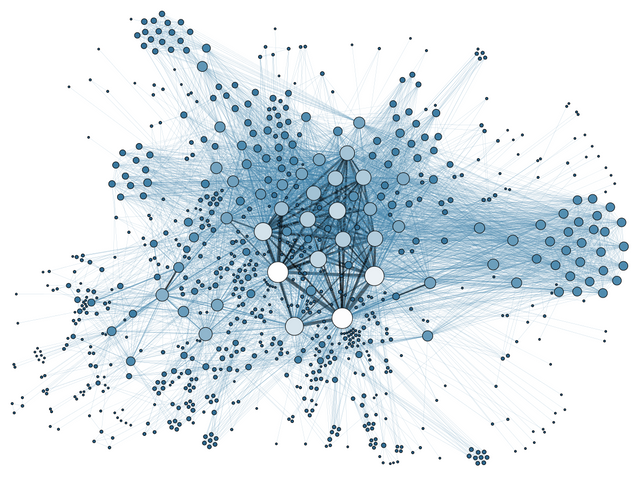How Blockchain Relates to Artificial Intelligence?
Buzz is All Around
Last year blockchain became one of the hottest topics in the world even much outside IT community. We saw a booming growth in the number of startups; large banks and evengovernments started investing in researching the technology.So definitely, there is much buzz about the topic, but seemingly it has nothing to do with machine learning and artificial intelligence. While articles and news on artificial intelligence as compared to blockchain and other cryptoworld topics are in no less degree blossoming these days, everybody keep silent on possible synergic implications in these truly breakthrough fields of computer science.At BICA Labs we do see a strong synergy between blockchain and AI — a synergy that goes much beyond just an applied science. In fact, we think that many rapidly growing directions at the edge of blockchain progress are going to be dimmed by greater perspectives that would be opened when “trustless ledger” technologies would be taken aboard by AI startups and innovators. So what is special about blockchain and in which way it could be applied to machine learning?
Rethinking Blockchain
To understand the hidden gem behind the blockchain idea, we have to start thinking about the technology from scratch. What main innovations were brought by blockchain, and, in fact, by its first implementation (bitcoin)? We think, that the most important among all of them was an algorithm for achieving persisting consensus in trustless peer environment. There are two really important keywords in this definition: persistent consensus and trustless. So let’s remember this part, we will need it a little bit later.
Means of Evolution
Starting from biological evolution and ending with free economy, evolvement is always about competition and adoption. It is not surprising that human intelligence has resulted from competition that have taken more then three billions of years: the evolution of cellular life forms. However, the most developed forms of intelligence — those that made humans easily distinguishable from animals — appeared and evolved within mush smaller time scope: it had taken around two million years for human society to form a written language and primitive culture and just four thousand years for the culture to evolve from simple tools up to cosmic and quantum exploration. What did speed up the process of the progress a million times? The language, as a tool for communication.Communication is all about information transfer, and in different forms it can be found at each level of live organisation: species exchanges genes via viruses, cells emit chemical and electric signals to each other, highest animals communicate via mimics and emotions, and humans — via language.Speaking in terms of cognitive architectures, human society is a form of multi-agent system, where each “agent” is independent and intelligent (well, at least as compared to physical systems), and communication between agents is necessary for their evolution as a whole. As was described above, efficient communication tool speeds up evolution exponentially: just compare results of the latest four thousand years of cultural evolution to two hundred thousand years of Homo sapiens evolution.
Glyphs for Algernon
Thoughtful reader would point out that it was not just a language that made humans civilised, it was a written language that done the job right. But why there was such a huge impact of a written letter or a sign? Wasn’t it all about communications, not a letters? It was. But an important part of communications is a consensus and persistence. Consensus means that each agent gets the same sense of a signal as others: a translation of a DNA sequence into a protein will be the same for bacteria as for a human being. Persistence means that the sense does not diminish with time. Thus, DNA and chemical molecules are “written languages” both in terms of consensus and persistence — in the same way as our language. So appearance of a glyph (hieroglyph, logogram and a letter) was a crucial step in sustained and accelerated progress for the humanity.Now, the last, but not the least: do you remember we were speaking about the second keyword, namely “trustless”? The case is that in any real-world multi-agent system communicating agents can’t trust each other: genomes transferring DNA might be “fooled” by viruses and bacteria; chemically communicating cells — by parasites; human society — by plagiarists and populists. So the point is not just to communicate and extract the same sense from communications; not just to persist the information and context, but also to be able to do that in a trustless environment.So, here we have our main secret revealed: blockchain will make for multi-agent AI the same thing that written language made for humans; it should provide means of accelerated evolution.

This is pretty interesting! I'm guessing you're a part of the BICA Labs team?